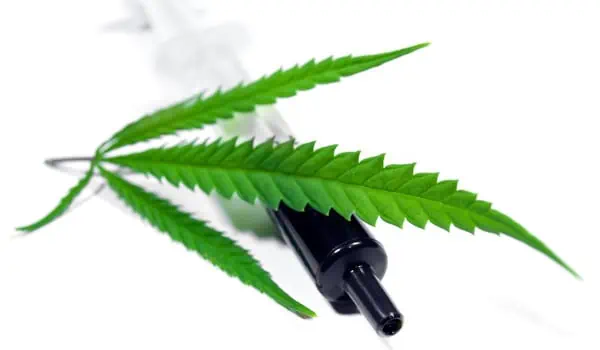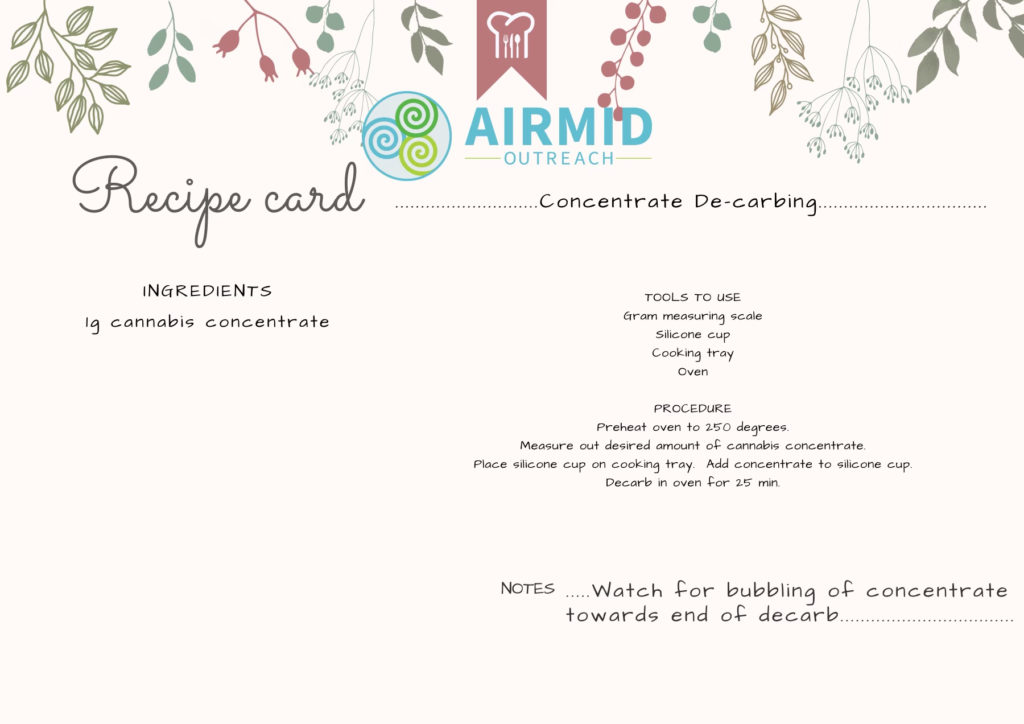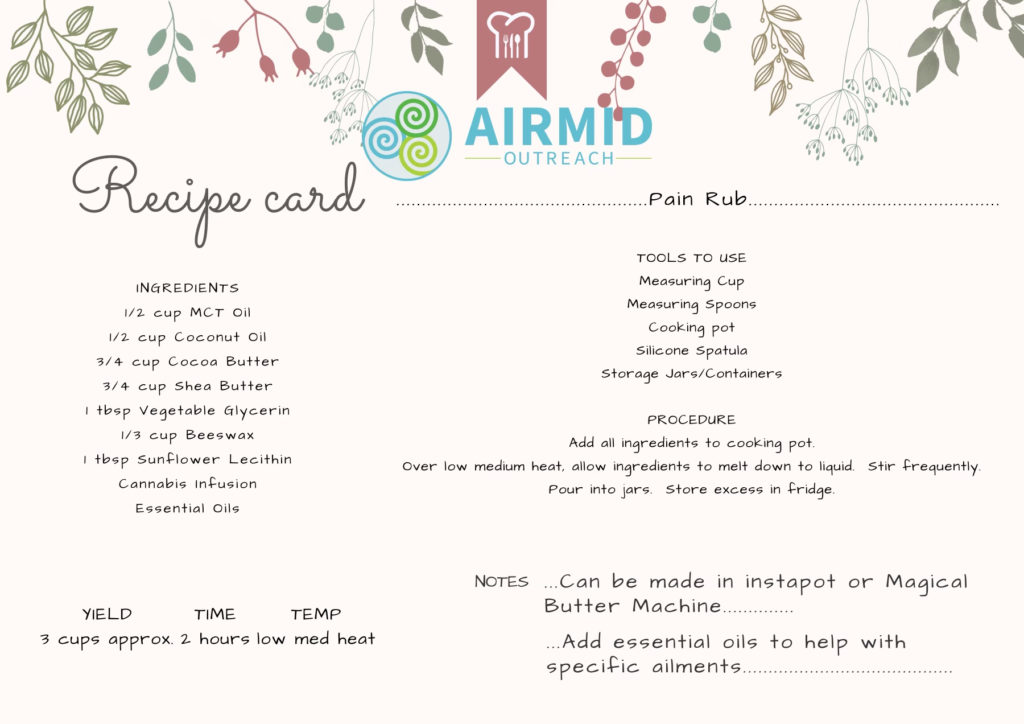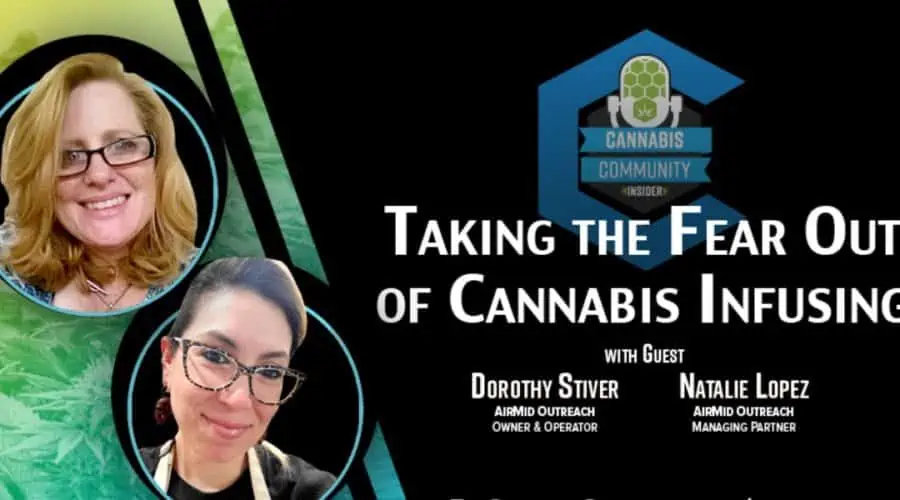Topical Cannabis Infusions: Making Pain Cream with AirMid Outreach
Table of Contents
In This episode of The Cannabis Community Insider, Host Penelope Hamilton sits down with guests Dorothy Rourke Stiver and Natalie Lopez of Airmid Outreach to learn about the DIY process of creating topical cannabis infusions. Learn and be encouraged by Dorothy and Natalie as they emphasize how easy and economical it is to make your own medicine. The topical recipe is shared at the end of the video or find it below, so “have no fear”!
Introduction to Making Cannabis-Infused Topical Pain Creams (0:10)
- Host Penelope Hamilton introduces the episode and guests Dorothy Stiver and Natalie Lopez.
- Today’s topic is about making your own cannabis-infused topical pain creams.
- Dorothy Stiver is the owner and operator of Arimed Outreach, while Natalie Lopez is the advocate and managing partner for Arimed Outreach.
- Arimed Outreach aims to remove the fear of DIY cannabis-infused topical pain creams and make it easy and basic to do at home.
- They will share their basic topical one-to-one pain rub recipe that is simple to make with no fancy equipment needed.
Background on Arimed Outreach
- Arimed Outreach is named after the healing goddess Aramed, who healed people with her magical herbs.
- Dorothy Stiver started with cannabis at an early age due to her spinal condition and lost three inches after giving birth to her second child.
- Natalie Lopez has been a medical patient for the last couple of years and a cannabis user for the last 25 years.
- Dorothy and Natalie aim to help people find out what works for them and customize a formula or system they can use easily.
- They are bent on teaching people about cannabis so they can have knowledge and power over their medical conditions.
Benefits of Cannabis-Infused Topical Pain Creams
- Topicals are great for first-time users who are fearful or have a stigma against cannabis.
- They are also great for seniors.
- Cannabis-infused topical pain creams can save much money, as their recipe can save someone over $3,000.
- Topicals do not get you high, so people who fear getting high do not have to worry.
- Topicals can help with pain relief and other medical conditions.
Making Cannabis-Infused Topical Pain Creams
- The recipe they use for their pain rub can be made on a stovetop with no fancy equipment needed.
- The recipe uses multiple parts of the plant to get the most out of it.
- Dorothy and Natalie customize the formula depending on what the person needs.
- They stress the importance of finding out what works for the person.
- They also stress that everybody’s different and there should not be arbitrary limits on patients.
Benefits of cannabis and CBD 07:21
- Many people want the benefits of cannabis without getting high all day.
- Cannabis can be used for pain relief and inflammation.
- CBD is one of the most effective anti-inflammatories available.
- CBD is about 20 times stronger than most prescribed medications and doesn’t cause ulcers.
One-to-one topicals 07:48
- One-to-one topicals contain equal amounts of THC and CBD.
- They’re popular because CBD is effective against inflammation and THC is effective for pain relief.
Recipe for pain rub 08:25
- The base of the pain rub is cocoa butter, shea butter, and coconut oil.
- Glycerin, beeswax, and lecithin are added to help bind it together.
- Cannabis infusion and essential oils are added for their therapeutic benefits.
- Grapefruit, orange, lemon, tea tree, bergamot, and ylang-ylang oils are used for a citrus smell.
- The ingredients slowly melt together in a pot or crockpot on low heat.
- The mixture is stirred every 15 minutes for about three hours.
- The cannabis source used is RSO or homemade concentrates.
- Decarboxylation isn’t necessary but can be done if desired.
Benefits of topicals 08:43
- Topicals are a great introduction to cannabis because they don’t get you high.
- They’re absorbed through the skin and can help with pain, inflammation, and other conditions.
- Women have more CBD receptors all over their bodies than men, so topicals are especially effective for them.
Making the pain rub 10:55
- The recipe is easily done on the stovetop on low heat.
- The temperature should be kept under 250°F to avoid burning off cannabinoids.
- Small batches are recommended to keep it fresh.
- A general potency can be calculated based on the amount of cannabis used.
Potency calculation 14:31
- To calculate the potency, divide the total number of milligrams of cannabis used by the total number of teaspoons in the recipe.
- This will give a range of potency for each teaspoon of the pain rub.
Infusing topicals is easy and foolproof 14:36
- Infusing topicals is easy and not as difficult as people perceive it to be.
- You only need to treat it like the hard math with potency.
- You can use a pot, a stove, or a crockpot hot plate to make your own topicals.
Milligrams are different from potency 14:51
- Grams refer to the product’s weight, while milligrams are the number of cannabinoids in the product.
- In topicals, the focus is not on a high but on the healing properties of the cannabinoids.
DIY topicals are foolproof 15:48
- Making your own topicals is not as difficult as people think.
- People fear they will waste their products, but it is almost impossible to fail when making topicals.
- Topicals are the easiest to make and pretty foolproof.
- You can teach a toddler how to do this.
CBD and THC are used in making topicals 17:09
- Both CBD and THC are used when making topicals.
- CBD is particularly useful for inflammation relief.
- Full plant extract is also essential, but CBD has changed the speaker’s world.
Containers used in storing topicals 18:21
- Glass jars are recommended because plastic containers may contain BPAs that leech out when in contact with hot products.
- Airtight containers are a must-have.
- The speaker prefers containers with wide openings to make it easy to get the product out.
- The material of the container does not matter as long as it is airtight.
Recipe sharing and customization 21:29
- The recipe for the pain cream will be shared at the end of the video.
- The recipe is for five cups but can be customized for a smaller batch.
- The recipe can be adjusted by using different amounts of ingredients based on personal preferences.
- The hosts call this “Lego math” since it involves simple calculations.
- The recipe is open for experimentation with different oils and butters.
- The hosts have used the recipe as a base for creating other products such as a face cream and toothpaste.
Making homemade CBD toothpaste 22:51
- The hosts created their own CBD toothpaste due to personal health issues.
- The toothpaste recipe includes bentonite clay and remineralizing ingredients.
- The hosts challenge anyone who tries it to go back to store-bought toothpaste.
- The recipe can be adjusted based on personal preferences.
Essential oils and quality 24:29
- The hosts recommend getting the best quality essential oils within one’s budget.
- The quality of essential oils can vary, so it’s important to research and know the brand.
- The hosts prefer organic and mo-free oils.
Growing and extracting oils 26:03
- The hosts plan to grow their garden’s bergamot, basil, and lavender.
- They can use an extractor to make oils, which can be used in cooking or infused into products.
- The hosts enjoy experimenting with new recipes and teaching others how to create their own products.
Where to get raw ingredients 27:49
- Shea and cocoa butter can be bought online, especially during the pandemic.
- They are also available at GNC health food stores, organic whole foods, and Michael’s.
- The cannabis market has made these ingredients readily available, even at stores like Jewel.
- The beeswax is locally sourced, if possible, to support the community.
Classes on infusing 29:13
- They offer virtual and small in-person classes.
- They can be reached through Instagram and Facebook, and their contact information can be found there.
- They offer classes with a variety of price points and time limits.
- They also encourage people to bring friends to the classes.
- They keep the classes relaxed to encourage better learning.
- They offer to teach as much or as little as the clients want, from simple infusions to making a whole sous-vide meal.
Infusing anything with cannabis 30:51
- They aim to infuse everything with cannabis.
- They have a whole armoire in the kitchen dedicated to cannabis-infused ingredients.
- They always look for ways to put cannabis in everything and are excited when clients ask how to infuse something.
Encouragement to try 31:40
- They encourage people to try DIY infusing with cannabis.
- They believe that cannabis should be approachable and that everyone should be able to utilize this product.
- They want to inspire viewers to try something new in their kitchen today.
- They believe there is no right or wrong way to do it, and everyone should find the way that works for them.
DIY Topical Cannabis Pain Cream
Before mixing all your ingredients, you will want to de-carb you cannabis flower or cannabis concentrate. For simplicity, AirMid uses concentrate such as shatter or butter to name a few. De-carbing is when you heat your cannabis to activate the THC; otherwise, you can skip the de-carb process as it naturally does once it gets heated to any extent but will make for a less potent product if not fully processed. Some concentrate infusions such as the “RSO” (Rick Simpson oil) or more commonly found and better described in Illinois is FECO (Full Extract Cannabis Oil) in which these products at the dispensary are already de-carbed and ready to use.

How to ‘De-carb your Cannabis Concentrate’
Ingredients:
- 1g Cannabis Concentrate
Tools to use:
Procedure:
- Pre-heat oven to 250 degrees.
- Measure out your desired amount of cannabis concentrate.
- Place the Silicone cup on a cooking tray and add your concentrate to the silicone cup.
- Let it sit in the oven to De-carb for 25 min.
- Set your timer and enjoy some cannabis
- REMEMBER you consumed and wear your oven mitts and remove them from the oven 😉

Topical Pain Cream Recipe:
Can be made on stove top, Crock Pot, Insta-Pot, or with a Magic Butter Machine
Yield: 3 Cups
Time: 2 Hours
Temperature: Low to Medium Heat – 250 degrees max
Ingredients:
- 1/2 cup MCT Oil
- 1/2 cup Coconut Oil
- 3/4 cup Cocoa Butter
- 3/4 cup Shea Butter
- 1 tbsp Vegetable Glycerin
- 1/3 cup Beeswax
- 1 tbsp Sunflower Lecithin
- De-carbed Cannabis Concentrate
- Essential Oils
Tools to use:
Procedure:
- Add all ingredients to cooking pot.
- Over low/medium heat, allow ingredients to melt down to a liquid while stirring frequently.
- Pour into jars.
- Store excess in fridge.
- Enjoy a cannabis treat, you earned it!

Enjoyed this episode? Watch our other shows!


